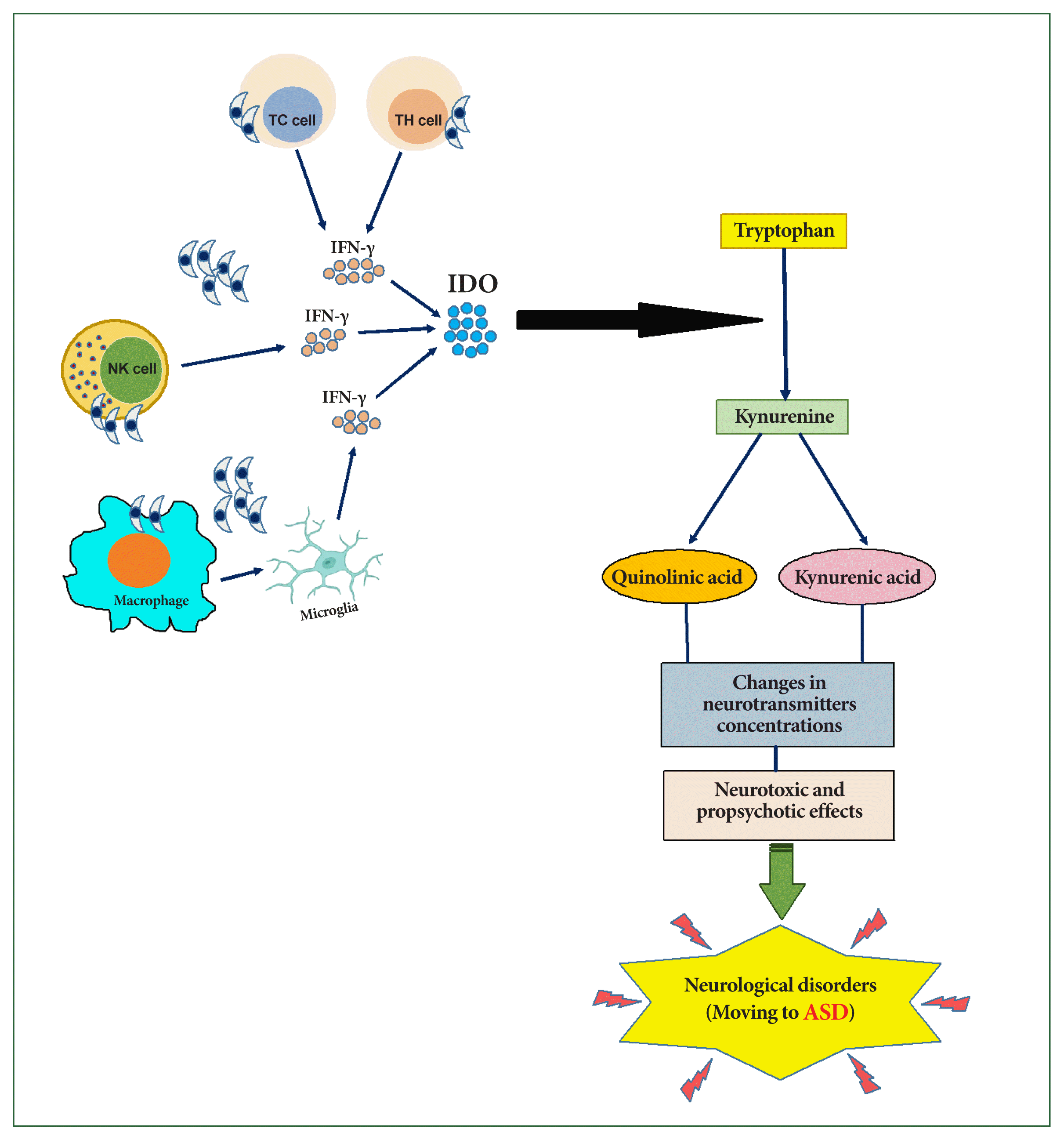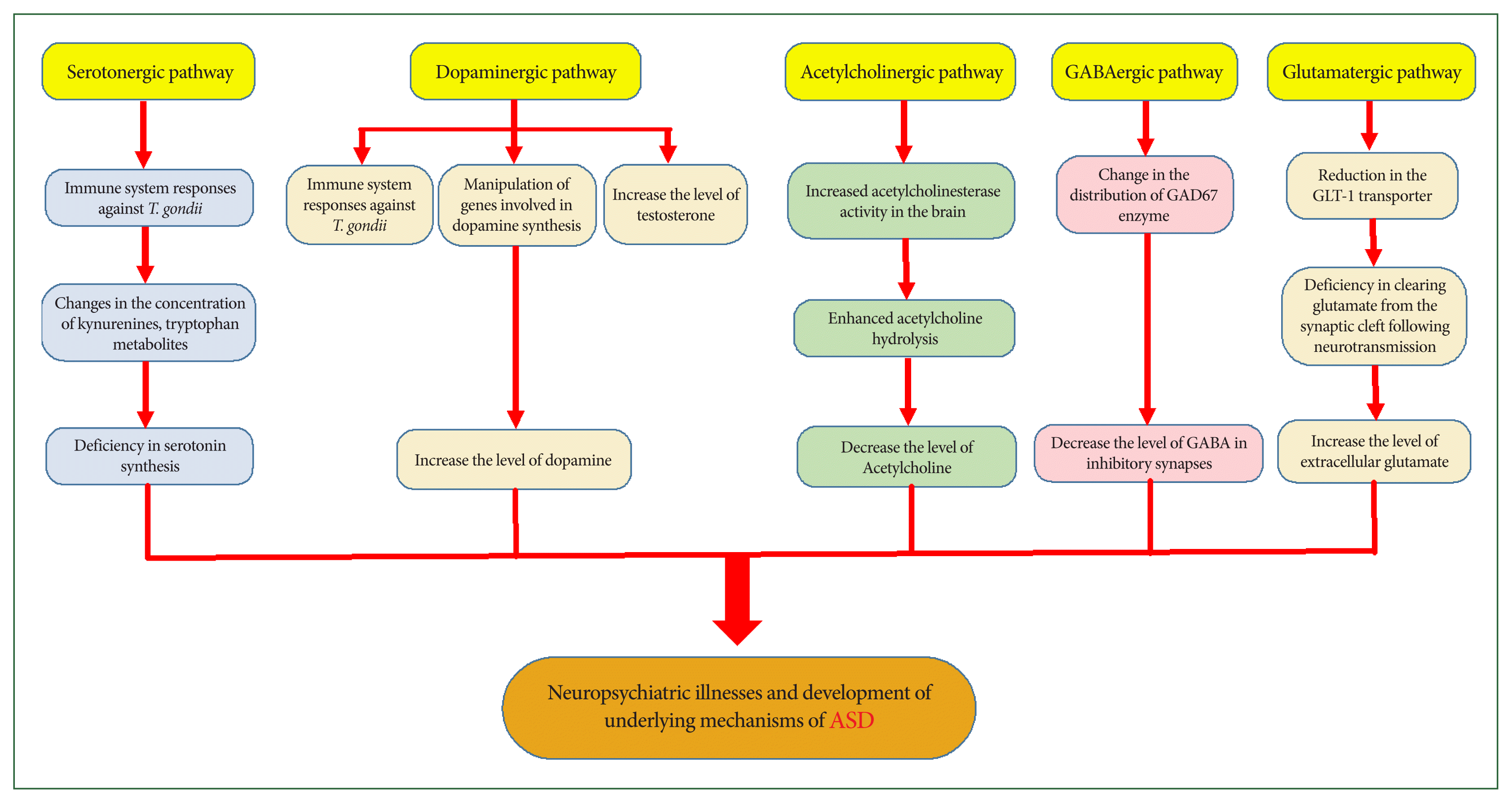



| Author (year) | Country | Study type | Host/culture media | T. gondii strain | Sample | Diagnostic technique | Key finding |
|---|---|---|---|---|---|---|---|
| Pfefferkorn (1984) [28] | Germany | In vitro study | Human fibroblast cultures | RH | Human fibroblast cultures | Chromatography, Electrophoresis, etc. | INF-γ blocks T. gondii growth in human fibroblasts by inducing host cell degradation of tryptophan |
| Stibbs (1985) [29] | USA | Animal study | Swiss-Webster mice | C56 | Brain | HPLC | Increased dopamine levels in T. gondii-infected mice |
| Fujigaki et al. (2002) [31] | Japan | Animal study | C57BL/6J and IFN-γ-gene-deficient (knockout) mice | Fukaya | Lung, Brain, Plasma | HPLC, RT-PCR |
Significant increase in IDO enzyme activity and mRNA levels in lungs and brain, and a substantial reduction in lung L-tryptophan concentrations following T. gondii infection in C57BL/6J mice These metabolic changes were absent in T. gondii-infected and uninfected IFN-γ gene-deficient mice |
| Silva et al. (2002) [32] | Brazil | Animal study | 129, C57BL/6, IFN-γ−/− mice | ME-49 | Serum, Liver, Spleen, Lungs, Brain | HPLC, RT-PCR |
Decreased tryptophan and increased kynurenine in the lungs, brain, and serum from mice infected with T. gondii Absence of induction of IDO mRNA expression, tryptophan degradation, and kynurenine formation in tissues from mice deficient in IFN-γ (IFN-γ−/−) |
| Engin et al. (2012) [30] | Turkey | Animal study | House mice | RH | Serum | HPLC | Higher kynurenine/tryptophan ratio in mice infected with T. gondii |
| Tonin et al. (2014) [34] | Brazil | Animal study | BALB/c mice | RH, VEG, ME-49 | Brain, Serum | Spectrophotometric method, modified Griess assay | Increase AChE activity and nitric oxide levels in the brains of mice infected with T. gondii |
| Brooks et al. (2015) [33] | USA | Animal study | C57BL/6 mice | ME-49 and CEP | Brain | Immunohistochemistry, Western blot, RT-PCR | Altered GABAergic synapses and signaling with oss of GAD67 at synaptic terminals; spontaneous seizures in mice infected with T. gondii |
| David et al. (2016) [39] | USA | Animal study | C57BL/6 or BALB/c mice | ME-49 | Brain | Real-time PCR, Western blot, Immunohistochemistry, Microdialysis | A significant reduction in GLT-1 expression, a significant increase in extracellular concentrations of glutamate, and neuronal morphology changes, including dendritic spine loss following infection with T. gondii |
| Machado et al. (2016) [38] | Brazil | Animal study | Mice | ME-49 | Brain | Photometric method, Behavioral tests | Increase brain AChE activity, memory impairment, and anxiolytic behavior in mice infected with T. gondii |
| AL-Hadad et al. (2019) [35] | Iraq | Human study | Human | - | Serum | ELISA | Slight increase in serum dopamine levels in infected individuals |
| Atmaca (2019) [36] | Turkey | Animal study | Swiss albino mice | ME-49 | Brain | RT-PCR | Increased expression of serotonin receptors (5-HTR2A, 5-HTR2C, 5-HTR6, 5-HTR7) in mice infected with T. gondii |
| Carrillo et al. (2020) [37] | Iran | Animal study | C57BL/6J and Cx3cr1-GFP mice | ME49, ME49-RFP, and CEP | Brain | Immunohistochemistry, Serial block-face scanning electron microscopy | Loss of inhibitory perisomatic synapse and microglial activation following persistent T. gondii infection |